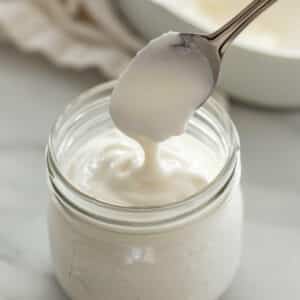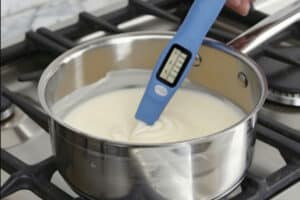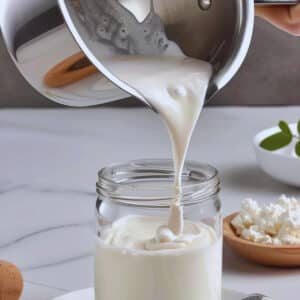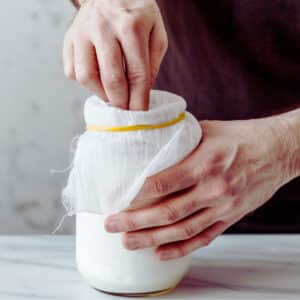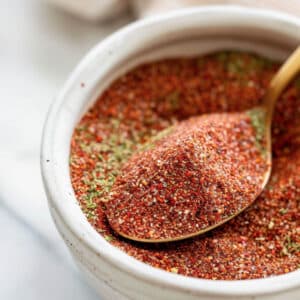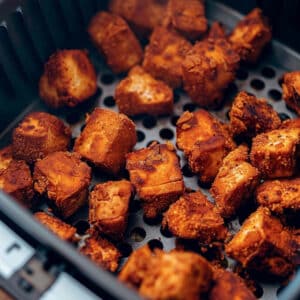Tired of store-bought creme fraiche? Discover how insanely easy it is to make your own! Think luxuriously creamy sauces, tangy dips, and unforgettable desserts – all starting with a simple recipe. Upgrade your cooking game and ditch those little plastic tubs for good. This is the secret ingredient you didn't know you needed.
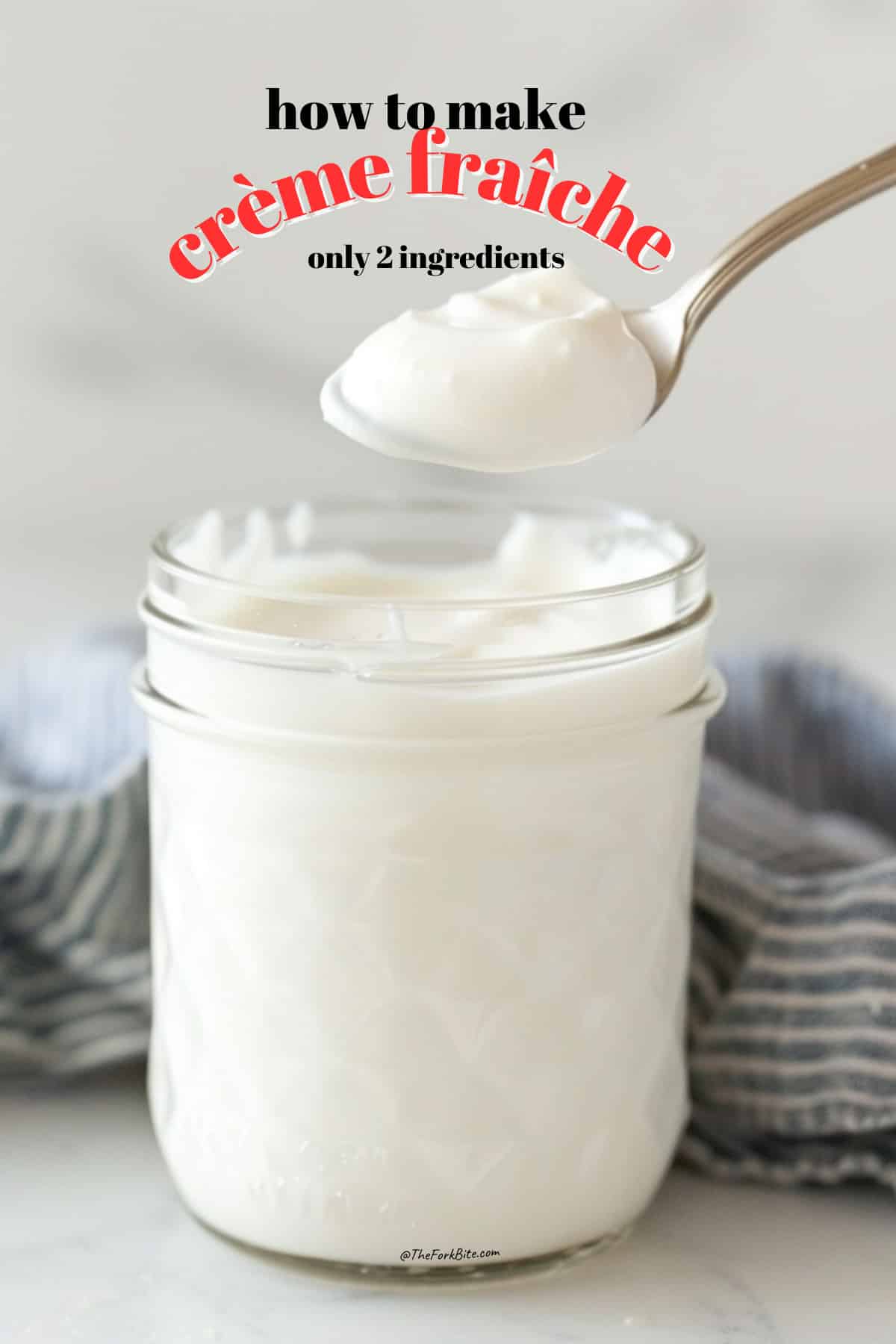
I'm obsessed with creme fraiche – it's like the magic ingredient that makes everything taste better! Berries? Instantly gourmet. Scrambled eggs? Pure luxury. Dolloped on Belgian waffles? Forget syrup, this is where it's at! It even gives sauces that extra oomph.
But seriously, that price tag? Ouch! That little container of imported deliciousness hurts my wallet. Good news: you can totally DIY this stuff at home! A little buttermilk, 24 hours, and BOOM – homemade creme fraiche for a fraction of the cost.
Crème Fraiche Ingredients
Heavy Whipping Cream. ⇢ The good stuff! Full-fat is where it's at for that rich, creamy texture.
Buttermilk. ⇢ Make sure it's the real deal – cultured buttermilk is key for that little tang and thickening magic.
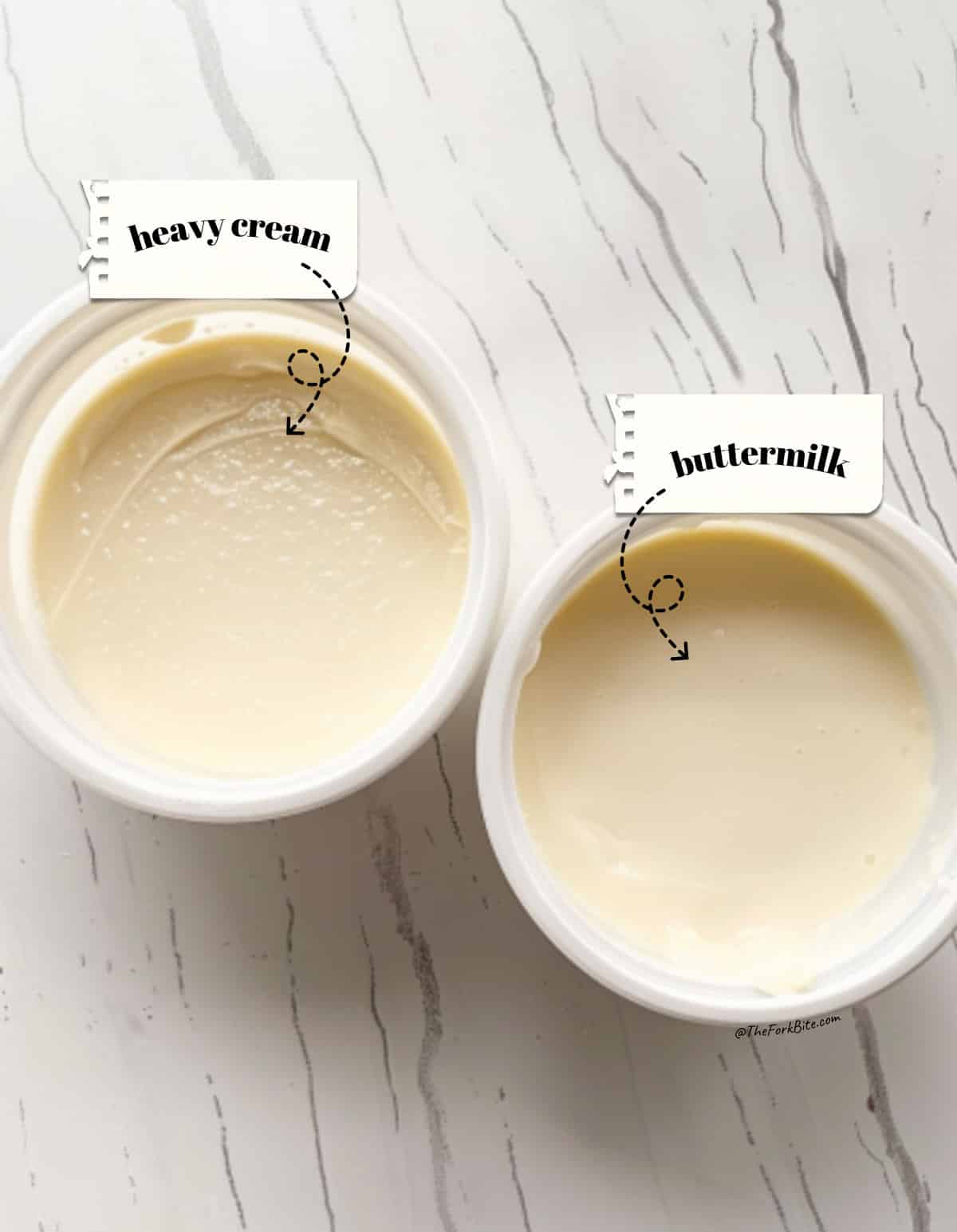
Step by Step Guide on How to Make it
Forget those pricey little tubs! Making luxurious creme fraiche at home is a total breeze. Here's the breakdown:
Get the Good Stuff. Start with a container of full-fat heavy cream and a splash of cultured buttermilk (find it right next to the regular milk).
Warm It Up (Optional).
Gently heat your cream to about 100°F in a small pot on the stove. This kickstarts the good bacteria, but room temperature works too if you're short on time!
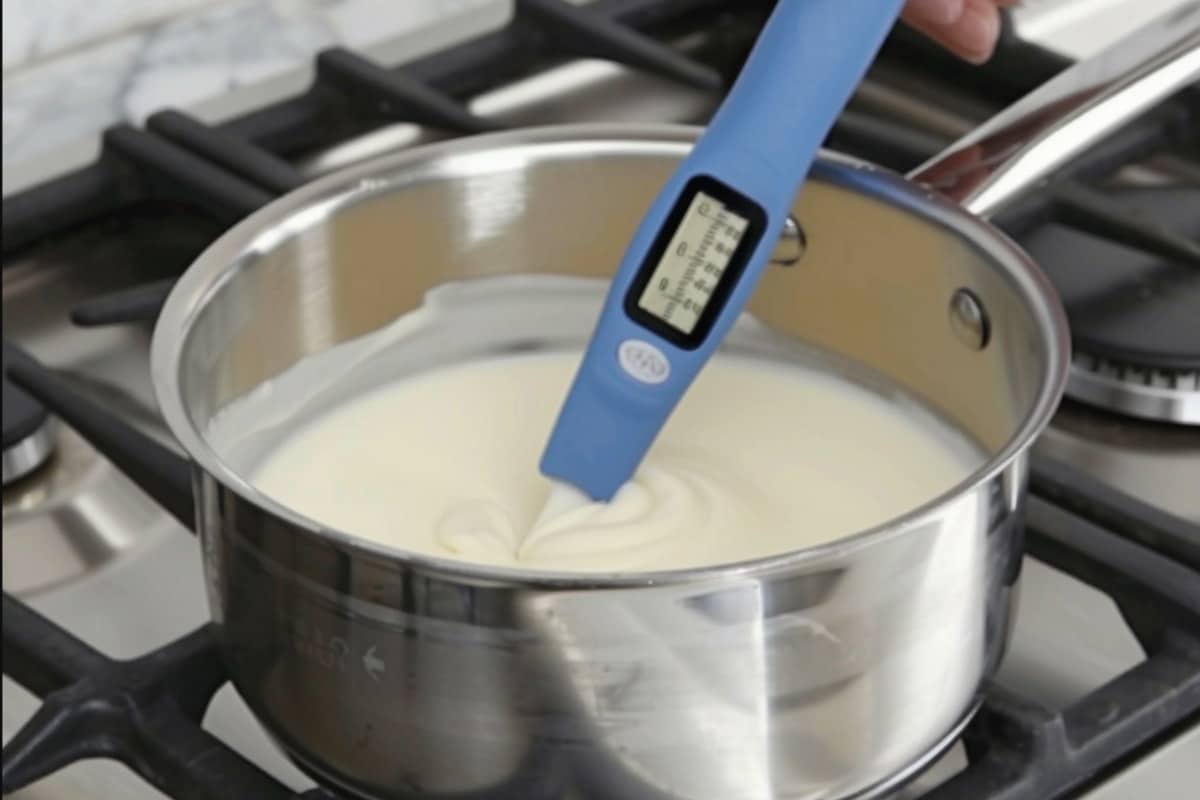
Jar Time.
Pour the cream into a clean jar or glass container. Stir in that buttermilk magic!
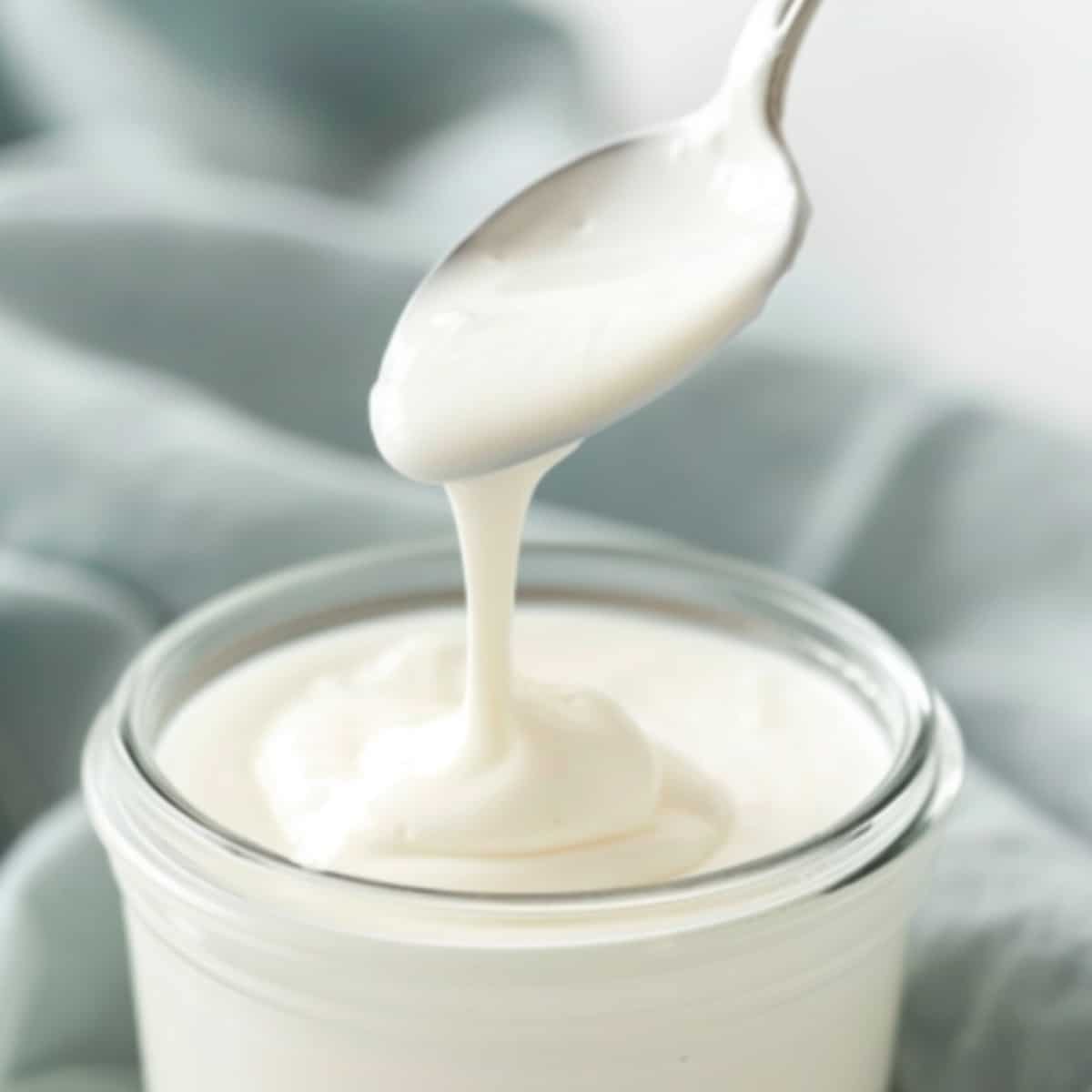
Cover & Chill Out.
Pop a piece of cheesecloth over the jar (or use a loose-fitting lid). Let it hang out at room temperature (between 70-78°F or 21°C - 26°C) for about 10-24 hours. It'll thicken up like magic!
How Thick is Thick Enough? You're looking for a consistency between thick sour cream and softened butter. Give it a stir – if it holds its shape, you're good to go!
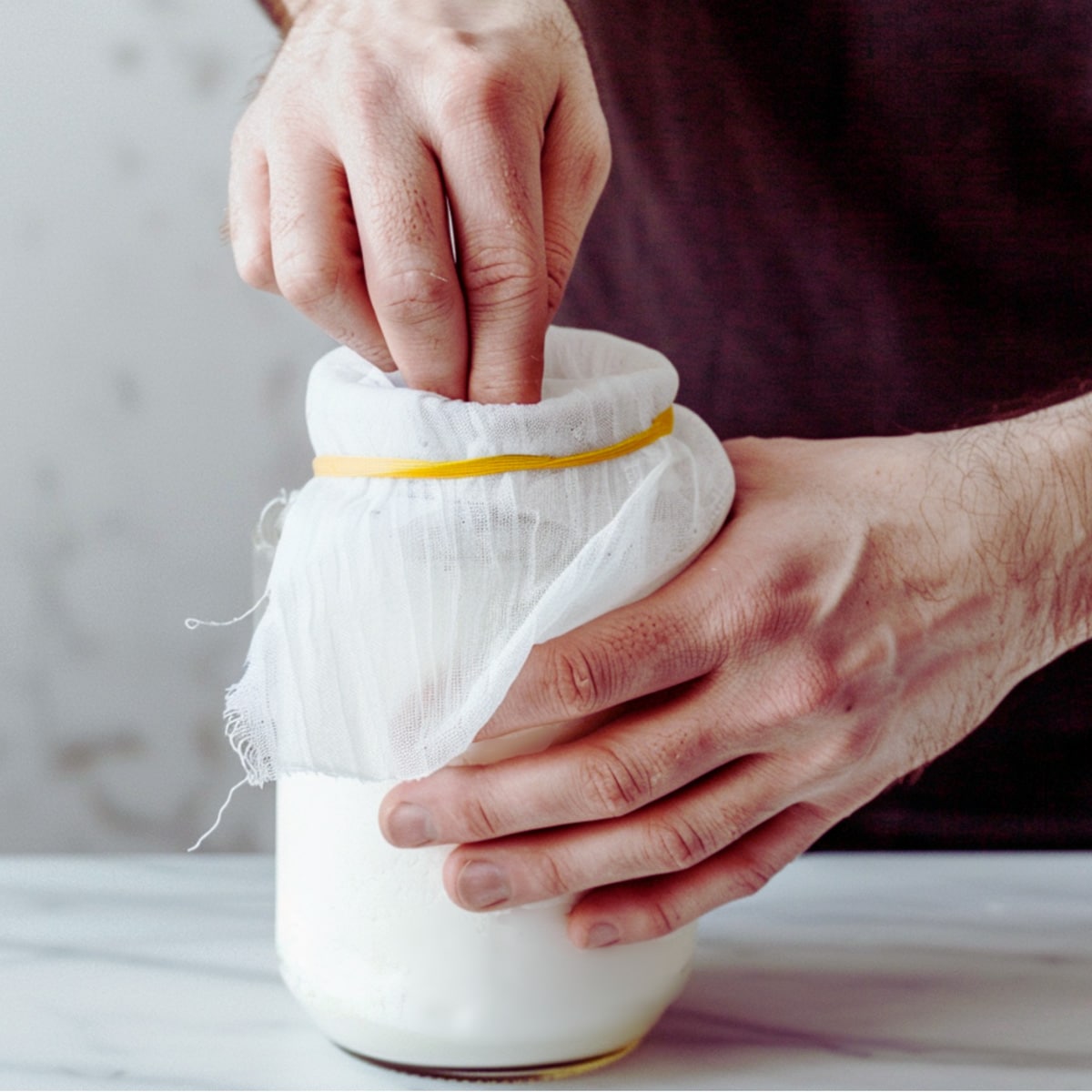
Full Recipe
Creme Fraiche Recipe
Pin RecipeEquipments:
- sauce pan
Ingredients:
- 2 cups heavy whipping cream (not ultrapasteurized)
- 3 tbsp buttermilk (full-fat cultured)
Instructions:
- Gently warm your cream: Pour your heavy cream into a medium saucepan and heat it over low until it reaches about 100°F. Just a little warmth helps the magic happen!
- Time to transfer: Carefully pour the warmed cream into a clean glass jar or container.
- Add the tang: Stir in your buttermilk gently until everything is combined.
- Cover and wait: Grab some cheesecloth and secure it over the top of your jar with a rubber band. Now, find a cozy spot on the counter (between 70-78°F or 21°C - 26°C) and let it work its magic for 10-24 hours. It will thicken beautifully!
Notes:
Tips for the Best Homemade Creme Fraiche
- Skip the ultra-pasteurized: Regular pasteurized heavy cream is the way to go! If you're lucky enough to find raw or unpasteurized cream (hello, farmers' market!), that'll make it extra special.
- Simple is better: Check your cream labels – the fewer ingredients, the better the creme fraiche will be.
- Get creative with your cultures: No buttermilk on hand? No worries! Sour cream or plain yogurt work just as well to give you that delicious tang.
- Freshness factor: Your homemade creme fraiche will keep its creamy goodness in the fridge for up to 10 days.
Nutrition Information:
Please note that all nutrition information are just estimates. Values will vary among brands, so we encourage you to calculate these on your own for most accurate results.
My Creme Fraiche Experiment: Buttermilk vs. Sour Cream
I was curious about the whole buttermilk vs. sour cream debate for creme fraiche – would there really be a big difference? So, I decided to try both! I figured I'd definitely have a favorite.
After letting them do their thing for two days, they looked pretty much identical... but once I gave them a stir, I noticed the sour cream version was a bit thinner.
Time for the taste test! Both were delicious, but definitely different. The sour cream creme fraiche had a sharper tang, while the buttermilk one was smoother. Honestly, unless you try them side-by-side, you might not even notice. I ended up loving them both!
The verdict? Don't stress about which one to use. Grab whatever you have on hand and get ready for homemade creme fraiche deliciousness – it's seriously easy to make.
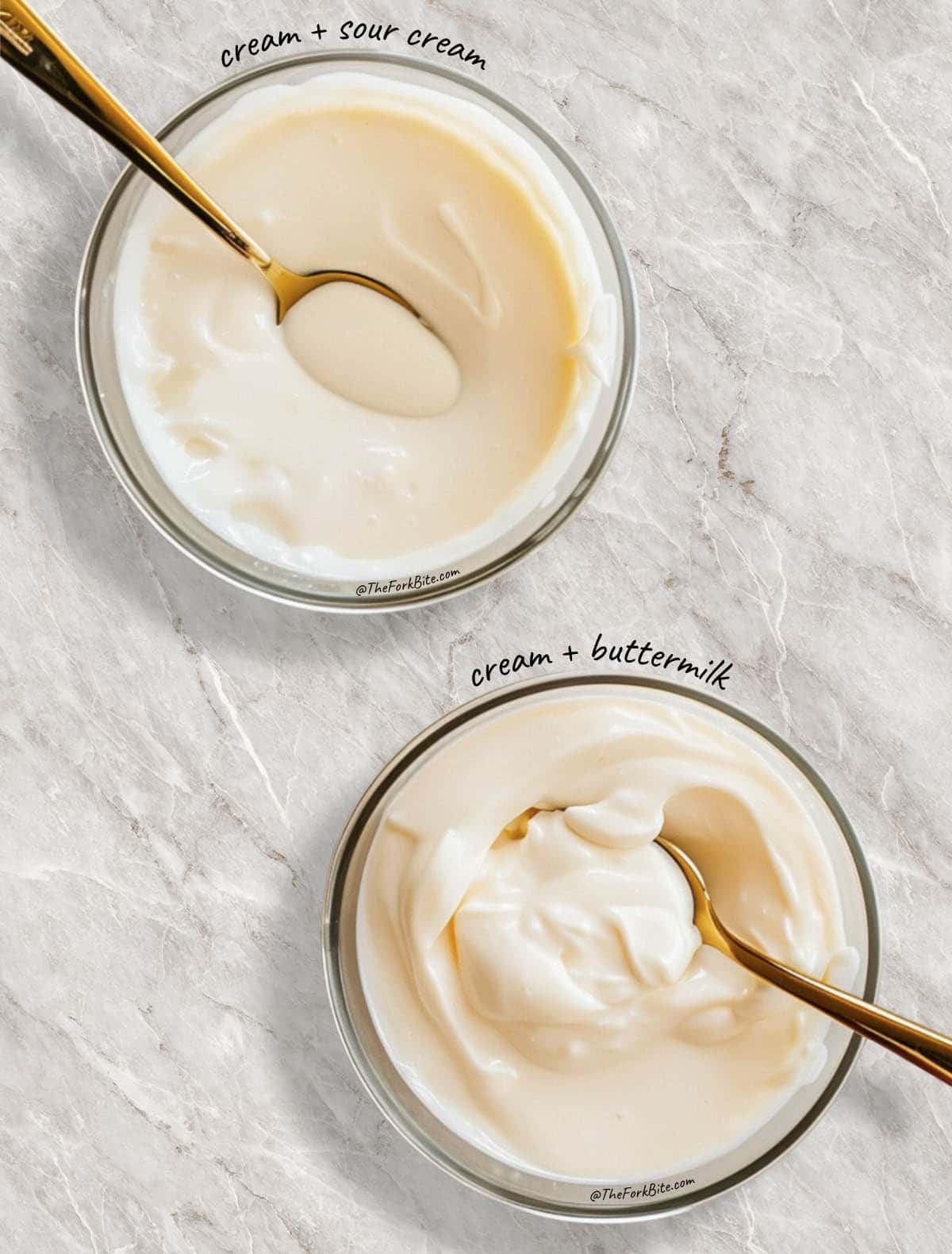
How would I know if the buttermilk is full-fat cultured?
1 Read the Label:
- "Full-fat" or "Whole Milk" Buttermilk: This is the best kind for creme fraiche, offering ideal richness.
- "Cultured": Look for this word, ensuring it has the live bacteria needed to thicken your cream.
- Ingredients List: A good cultured buttermilk will usually have only two ingredients: milk and bacterial cultures.
2 Nutritional Information:
- Check the Fat Content: Full-fat buttermilk typically has around 8 grams of fat per cup.
- Compare Brands: If unsure between two similar options, the buttermilk with slightly higher fat content is often a safe bet.
3 Texture Check:
- Consistency: Full-fat cultured buttermilk tends to be slightly thicker than low-fat varieties. It's still pourable but has a bit more body.
Things to Avoid
- "Sweet Cream" Buttermilk: It's made without culturing and won't work for creme fraiche.
- Homemade Milk + Vinegar/Lemon Buttermilk: This substitute lacks the necessary richness and bacterial cultures.
Bonus Tip: If you're still unsure, some specialty grocery stores will carry clearly labeled "creme fraiche buttermilk". This eliminates any guesswork!
What is Créme Fraîche Best Used For?
Crème fraîche is a wonderfully versatile ingredient that can be used in both sweet and savory dishes. Here's a breakdown of its best uses:
Savory Applications
- Sauces and Soups: It adds incredible richness and a subtle tang to sauces (think creamy mushroom sauce for pasta) and soups (like potato leek or tomato bisque). Unlike sour cream, it won't curdle when heated.
- Dips and Spreads: Whip it up with herbs and spices for a sophisticated dip, or use it as a base for spreads.
- Baked Potatoes: Forget plain sour cream - crème fraîche takes baked potatoes to the next level! Try it on my Loaded Seafood Baked Potato recipe for a truly decadent experience!
- Tacos and Other Toppings: Dollop it on tacos, burritos, enchiladas, walking tacos and nachos for a creamy, flavorful twist.
- Mashed Potatoes: Add a touch of luxury to your mashed potatoes.
Sweet Applications
- Desserts: Dollop it on fresh fruit, pies, cobblers, tarts, or cakes for a creamy, slightly tangy finish.
- Whipped Cream Alternative: Lightly sweeten it and whip it for a richer version of whipped cream.
- Frostings and Fillings: Add a touch of crème fraîche to your icings and fillings for a unique flavor and texture.
Additional Ideas
- Eggs: Makes scrambled eggs and omelets or pulled pork omelet for extra creamy and delicious.
- Pancakes/Waffles: Top them off for a luxurious touch. Check my salmon croquette recipe here.
- Salad Dressings: Adds richness and body to creamy dressings.
Frequently Asked Questions
While they share a similar tang, sour cream has a lower fat content and can curdle when heated. For sauces, soups, or as a base, creme fraiche is the better option. In a pinch, full-fat sour cream can work as a topping in some cases.
Stored in the refrigerator, it should last for about a week or two.
The cultures in the buttermilk need a warm environment to work their magic and thicken the cream. A temperature range of 70°F-78°F (or 21°C-26°C) is ideal.
A few factors could be at play:
Room temperature is too low
Not enough time has passed (it can take up to 48 hours in some cases)
Buttermilk wasn't active (check the expiry date)
It's possible, but may not yield the same tangy flavor. Alternatives include using a small amount of lemon juice or vinegar, or even a bit of store-bought creme fraiche as a starter.
While the traditional method needs time, some recipes suggest gently heating the heavy cream to speed up the process. For this blog post recipe, we use the heating method. However, this requires careful temperature monitoring.
Absolutely! To be extra safe, give your jar or container a good sterilizing before you start. Remember, we're adding good bacteria from the buttermilk, and those little guys are our helpers.
Meet your new buddy: Lactococcus lactis. Sounds fancy, but this microbe is all about turning cream into tangy goodness by producing lactic acid. More acid means a lower pH – basically, it creates a party that bad bacteria don't want to attend.
So, your cream stays safe and delicious. Science for the win!

